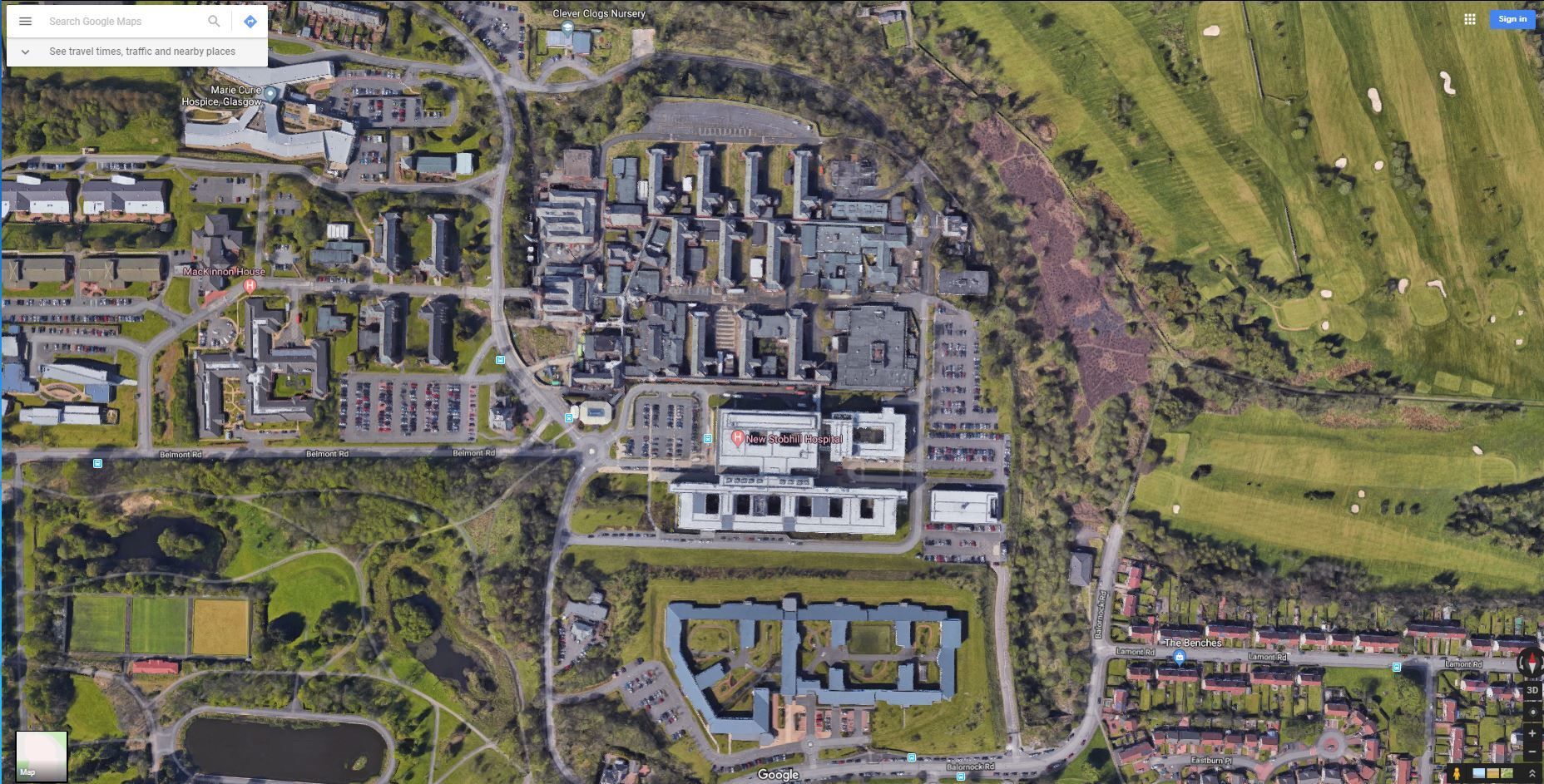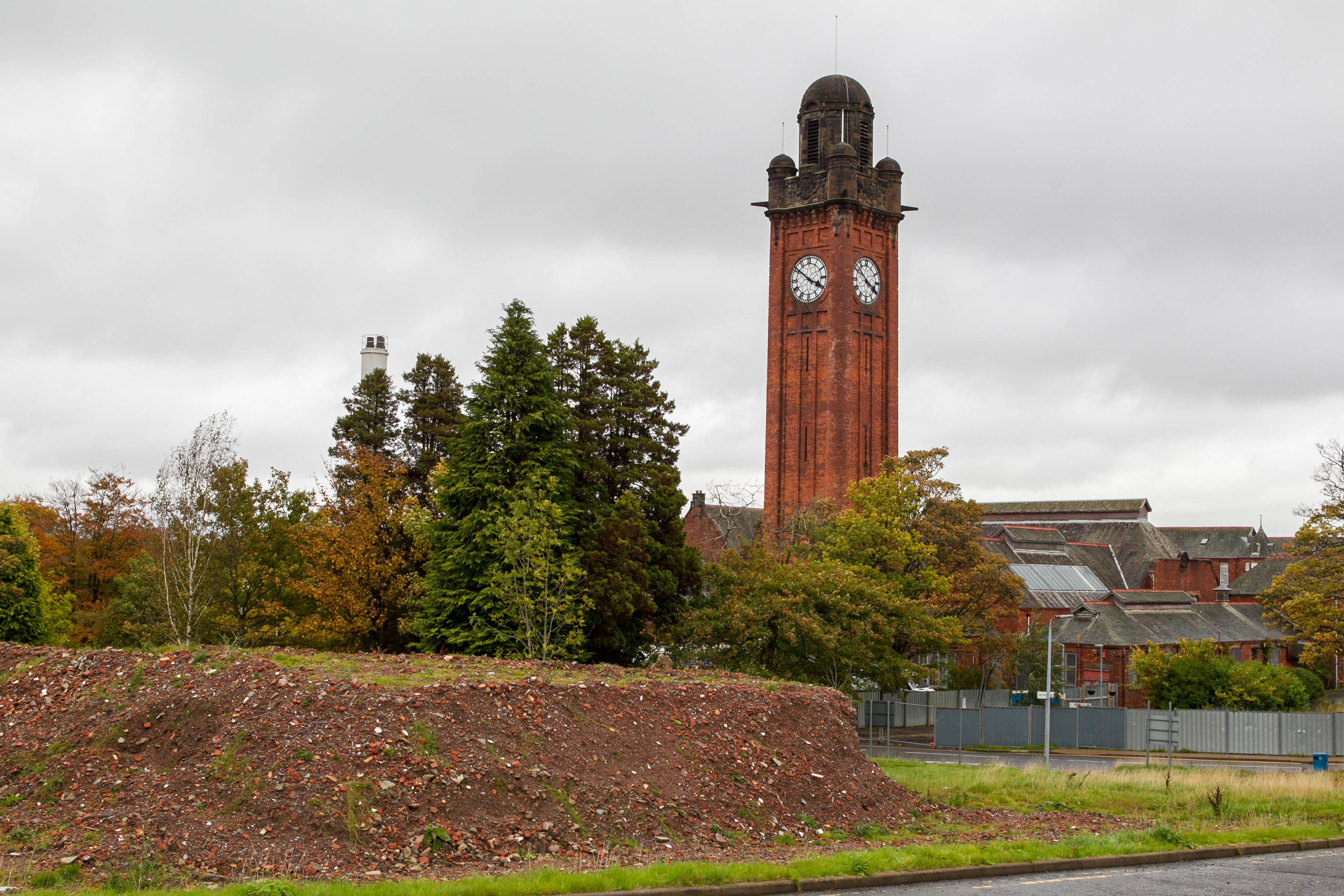
CRIMINALS plundered more than £1 million of metal and wiring from a derelict hospital using a hidden network of disused tunnels to loot the building, we can reveal.
The well-organised gang spent months stripping valuable high-voltage cables, pipes and lead work in repeated raids on the old Stobhill Hospital in Glasgow.
They used utility corridors beneath the buildings to move around the site, where they had erected temporary lights. They even stole a CCTV security camera.
Experts estimate the market value of the haul would easily reach £1m and police believe the operation was only halted when the hospital was picked clean, with nothing left of value inside.
Paul Sweeney, MP for Glasgow North East, discovered the extent of the thefts after visiting Stobhill in September for a site visit in the wake of a major fire which had been started deliberately.
Now Mr Sweeney has written to NHS Greater Glasgow and Clyde to express his “shock” at the state of the old hospital.
“It’s a scandal,” said Mr Sweeney. “Millions and millions of pounds worth of property has been taken, destroyed or allowed to fall to bits at a time when the NHS is so strapped for cash. This site was a treasure trove, but its value has been plundered by criminals.”
Mr Sweeney also criticised the health board for failing to heed warnings to secure the site after it was closed following the opening of the new Stobhill hospital.
Gang members are understood to have accessed the old hospital grounds by driving to Littlehill golf club in Bishopbriggs then crossing a narrow bridge hidden from view by trees. Tools were used to pop the rivets securing the base of the vertical posts on the metal security fences so they appeared undamaged but could be parted like curtains to allow access.
They would use a welding solder to temporarily hold the posts in place after they left and avoid them “swinging like wind chimes”. Under the cover of darkness, they squeezed through ducts into the underground utility tunnels which connect the hospital buildings, and are lined with large steam pipes and vast stretches of high-voltage cables.
The power was still live, so the gang used a skilled electrician to isolate the sections of cable before it was severed and stolen.
The gang used the mains supply to rig up temporary lighting in the tunnels to make their task easier as they returned time and again to methodically strip the valuable scrap metal and cables.
They suffered an apparent setback when they accidentally caused a blackout in the new hospital after cutting the wrong cable and leading to the temporary lights being discovered.
Mr Sweeney said: “That was the reason they powered the site down. There had still been live electricity and they had rigged up temporary lighting. It shows how undisturbed they were. But then the criminals severed a high-voltage cable running into the new hospital. Then the staff found the temporary lighting running through the ducts. They realised that the criminals had a sophisticated electrician.
“They were able to isolate high-voltage cables. They knew exactly what they were doing. It was not vandals going in and doing it, they’d have been electrocuted.” But it had an unexpected bonus for the crooks as after the NHS cut the power to the old site it meant the CCTV cameras did not work. One prominent CCTV camera on a pole overlooking the site had already been stolen during one of the earlier raids.
The gang were then able to begin stripping metal from roofs and skylights, with the more nimble henchmen even “shinning up drainpipes” to get to inaccessible areas. The bounty would be carried to a waiting vehicle on the golf course access road as it was taken in stages over a period of months and years.
It would then be sold as scrap metal to yards prepared to turn a blind eye.
The criminals would have pocketed far less than the market value of the scrap because they were selling it through black market channels.
Sources said there are only a handful scrapyards in the west of Scotland who would have been willing to touch the haul. The presence of organised criminals at Stobhill also kept vandals away.
Mr Sweeney added: “For a few years the site was being policed by the gangsters. The fires there have only happened after it has been picked clean.”
The fire in July destroyed a building which had housed Scotland’s first X-ray unit. Medical equipment had been left in the buildings when they were decommissioned and was not stolen.
Most of the site is now earmarked for demolition when funds are available.
However, Mr Sweeney has written to NHS Greater Glasgow and Clyde chief executive Jane Grant asking for a meeting about the future of the site.
He wants to see the impressive red-brick buildings with “significant architectural value” kept and possibly converted into apartments or townhouses.
Stobhill opened in 1904 as a Poor Law hospital with the official motto “Health is Wealth”. It was closed in 2011, two years after the opening of a new ambulatory care and diagnostic hospital built alongside it.
NHS Greater Glasgow and Clyde confirmed the hospital has been targeted by thieves since shutting in 2009 but disputed the value of the haul. The board said managers had been working with police and fire to protect the buildings.
A statement added: “The decommissioned buildings on the old Stobhill part of the site have been prioritised for a phased demolition programme. We have been working closely with Police Scotland and Scottish Fire and Rescue Service on how we protect these buildings.”
Police Scotland said: “We have received a number of reports regarding metal having been stolen from the old Stobhill hospital. Inquiries are ongoing.”
Antonia Grey of the British Metals Recycling Association said the £1m figure was “not surprising”, adding: “It’s a multiple building site and the thefts have been over years.”
In August, £300,000 of metal was stolen in a single night from a telecoms firm in Livingston, West Lothian.
She said: “The theft in Livingston was £300,000 from just one site, and a single church roof theft is tens of thousands just for a small square meterage.”
A gang of sophisticated thieves used detailed knowledge of the old Stobhill hospital to plan the raids and steal more than £1m worth of metal and wiring.
The gang entered utility tunnels that led to the hospital’s boiler house and were lined with high-voltage cables. They even installed lights to help them see.
The criminals were keeping vandals at bay but, after the building was stripped, louts set a fire that gutted a building, once home to Scotland’s first X-ray unit.
They broke into the grounds by driving to Littlehill golf club and cutting through a fence. After each raid, they loaded their vehicles and repaired the fence.
EXPERT: £1m is a conservative estimate. These were professionals, working night shifts
Metal theft is big business, as stolen copper, lead and other materials is estimated to cost the UK economy £220 million per year.
An expert in metal theft said he believes the true cost of the Stobhill raid would dwarf the current £1m estimate.
Jim Scott, metal theft lead at the Scottish Business Resilience Centre, was consulted about the Stobhill operation after the scale of the break-in was discovered.
He said: “I would say that £1m was a conservative estimate.”
Mr Scott added that the theft was no amateur enterprise and the gang who carried out the raid would be well drilled professionals.
“They were very organised,” he said. “The criminals were basically working night shifts in the place. The only thing they didn’t have was a clock-in, clock-out machine.
“Unfortunately, they cut through a live cable which caused an incident and a fire in the new hospital.”
He added: “They will go for the copper first.The lead will be the last resort because it’s less valuable and it’s harder to transport.
“It’s not just the theft, it’s the damage that the thefts do to the buildings. It creates broken-window syndrome, which means it’s more likely to attract further criminality.”

Enjoy the convenience of having The Sunday Post delivered as a digital ePaper straight to your smartphone, tablet or computer.
Subscribe for only £5.49 a month and enjoy all the benefits of the printed paper as a digital replica.
Subscribe